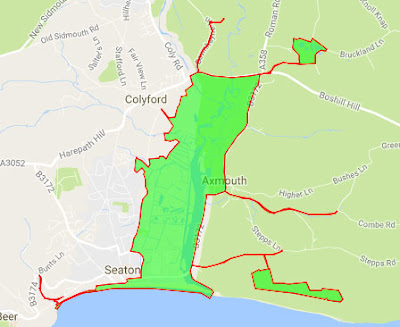As we near the end of autumn 2016, the over whelming feeling I have regarding my birding is of frustration. A lot of leg work on the patch did give me some nice sights and a few finds, but I really feel like I deserved more.
We have such a massive patch that in reality I don't think we could ever say we have it well covered. Having a big patch is good in some respects don't get me wrong, I love having so many different habitats on offer, it means there's always somewhere to go whatever the weather. But you cannot be everywhere at once, and on the good days you really want to be! It can make an exciting day, frustrating. So many good birds must go through here unseen, let's be honest if a
Black Stork can sneak though then so could a hundred rare passerines!
 |
| At least 8 Yellow-browed Warblers have been found on patch this autumn, but how many were really here? |
So next year I thought I would try a different tactic, instead of covering lots of ground rather infrequently, I am going to cover limited ground much more thoroughly. And I have found the perfect means of doing this...
Patchwork Challenge has been running for many years now, and watching it from the outside since its start has been great fun. Patch birders all across the UK submit their monthly patch totals, and they are compared with others in many different ways. There seems to be great banter within the 'players' too and a genuine interest in each others progress. One of the rules though is your patch cannot be bigger than 3km
2 - the Axe patch is about 45km
2!!
So where will my 3km patch be? Well I have put a lot of thought into this, and at first I was going to pick a nice coastal strip from Beer Head to Branscombe. But the one thing we have that really sets us apart from most other coastal sites is an Estuary. It may not be big, but it is our greatest asset so I would be daft not to include this.
Gav entered Patchwork Challenge (PWC) about three or four years ago, and if you ask me he picked the perfect patch. A neat square following the three major roads surrounding the river valley (Seaton Road/A3052/B3172) . I was going to do the same, but after much thought have decided to tweak it, basically for my convenience and enjoyment. At the end of the day birding is a hobby, so why limit the enjoyment it gives me? These are my tweaks and why:
Living within your Patchwork Challenge patch gives so many benefits! So I have pulled the boundary out a little to include my house.
I own a dog, and so much of my time outside is walking her. Within Gav's PWC patch there is really limited dog walking potential, as quite rightly all the reserves are dog-free areas. I have stretched the boundary to include the whole length of the beach from the river mouth to Seaton Hole, a little way up Seaton Hole valley, and the main road through Axmouth up to Springhead. These are all places I walk Honey regularly.
I have no bird ringing sites within Gav's PWC patch, which is a pity as I do not want my bird ringing to suffer from my PWC effort. Lower Bruckland Ponds is one of my best ringing sites, so I have encompassed that into my PWC patch.
'Vis mig' is one of my favourite birding pastimes, but down in the valley where there is no height and no pinch points, there is simply nowhere good for vis migging. To fulfill my vis mig needs I have included a bit of Axe Cliff in my PWC patch, the best vis mig watch point on the patch. This also gives me some nice stubble fields to kick in the autumn, and the sycamore lined road up to the Golf course (although I've never seen anything here!).
So with all the above in mind, here is my 2017 Patchwork Challenge patch (measuring 2.989km
2)...
One thing I do want to stress though is my patch will always be my patch. Beer Head will always be on my patch, as will Branscombe mouth, Colyton, etc. And trust me if a Waxwing is seen at any of these places I will be there quicker than anyone! But for 2017, I just want to see if concentrating on a smaller area makes a difference. In my blog posts next year to try and keep things clear I will call the patch, the patch, and my Patchwork Challenge patch, the PWC patch.
And yes I haven't forgotten my first child is due in mid May! This I am sure will hamper my progress, but who knows, maybe the prospect of a PWC year tick will be exactly what is needed to encourage me to put my boots on and head out after a disturbed night, and not just back to bed...








































